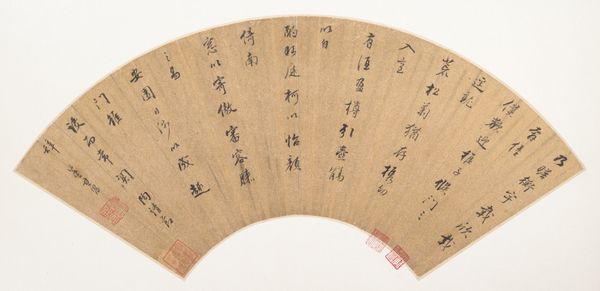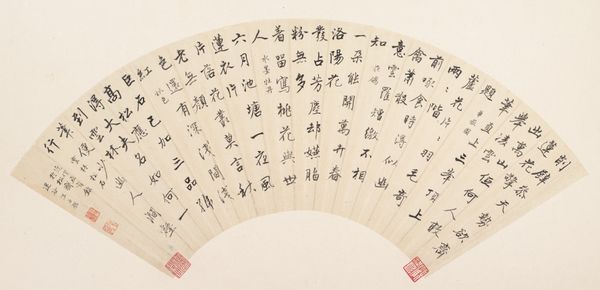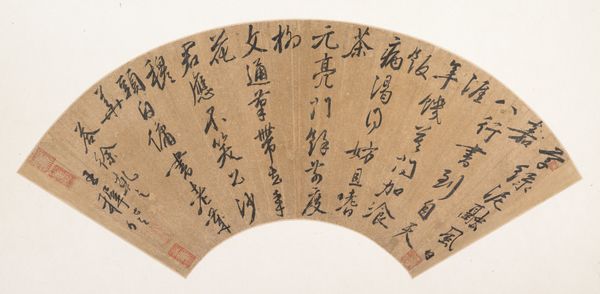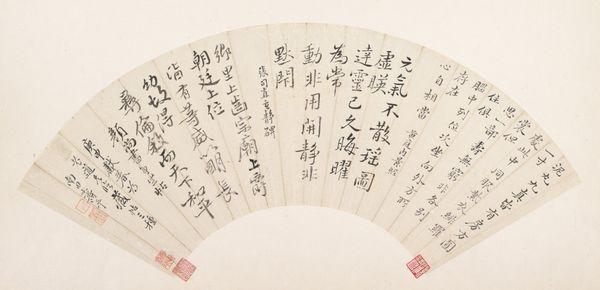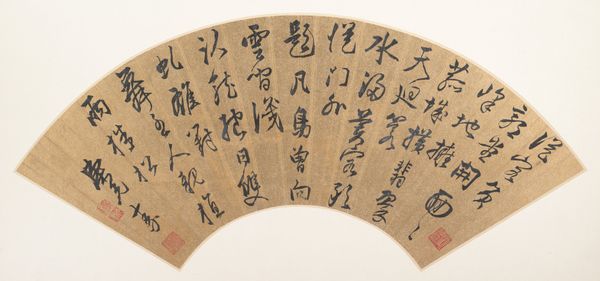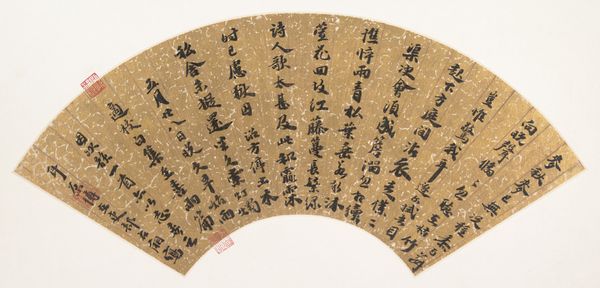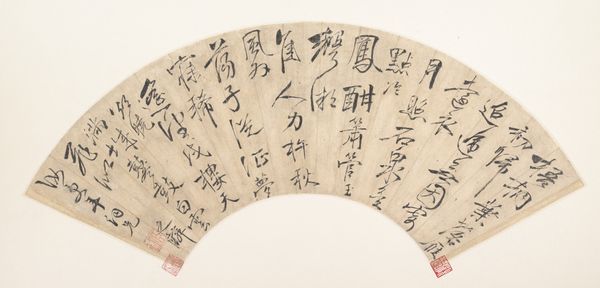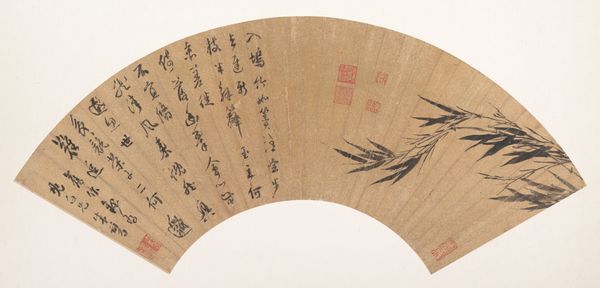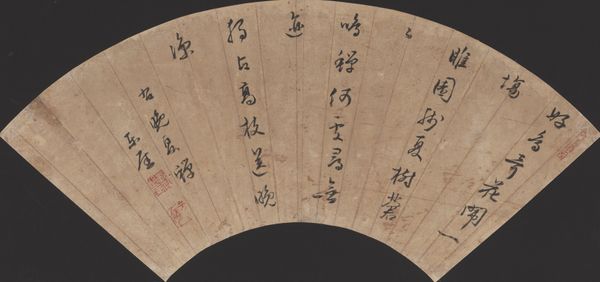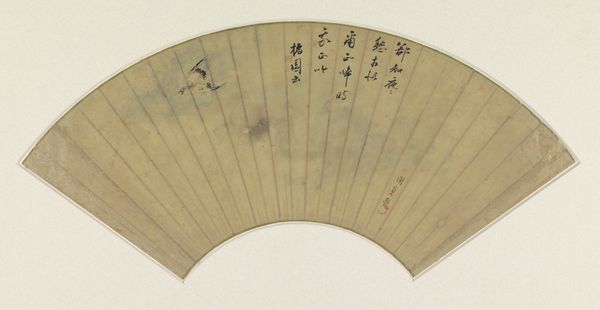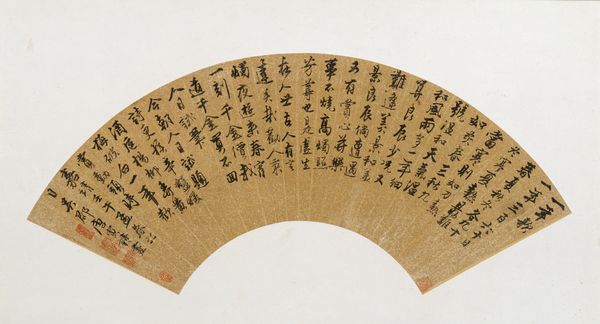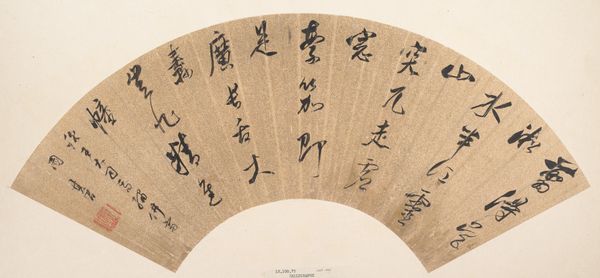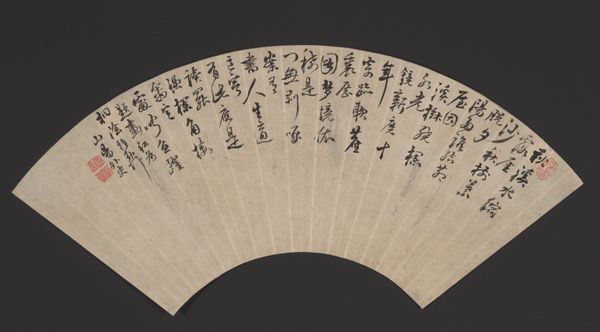
drawing, paper, ink
#
drawing
#
asian-art
#
paper
#
ink
#
calligraphy
Dimensions: 6 3/4 x 19 1/2 in. (17.1 x 49.5 cm)
Copyright: Public Domain
Curator: This is a fascinating example of calligraphy, a letter by Li Zhi created in 1702. The use of ink on paper is traditional, but the expressive brushstrokes are quite distinct. Editor: It's beautiful! I love the shape and texture of the work and I can imagine someone reading it in the breeze. I'm struck by how free-flowing it seems, yet there is clearly an intentional structure and layout to the character. How do you interpret this work? Curator: Looking at this letter, I am drawn to understanding the historical context surrounding its creation. Li Zhi lived in a time of immense upheaval during the late Ming dynasty. His writing could reflect a personal struggle for identity in times of change. Editor: A struggle for identity, really? Curator: Exactly! Consider how the letter embodies both personal expression and adherence to cultural forms. The discipline of calligraphy intertwines with the expression of the author’s sentiment, right? Do you think that contrast highlights the kind of pressures placed on individuals within strict social systems? Editor: Absolutely! It highlights this constant negotiation between freedom and obligation, almost like an artistic rebellion through accepted, traditional forms. It's like he's using the rules to express something beyond them. I hadn’t considered it that way. Curator: Thinking about this, calligraphy isn't just beautiful penmanship; it’s a cultural practice with its own power dynamics. The choice to adhere to or deviate from these traditional scripts could itself be a statement. Editor: I see what you mean! Viewing it through that lens makes the piece even more powerful. I'll definitely be researching Li Zhi and the context in which this piece was written. Thanks so much for your insight.
Comments
No comments
Be the first to comment and join the conversation on the ultimate creative platform.
